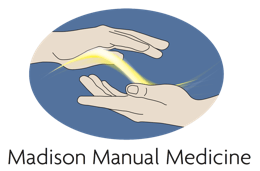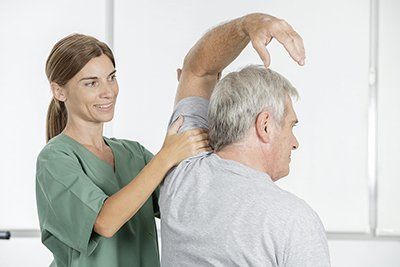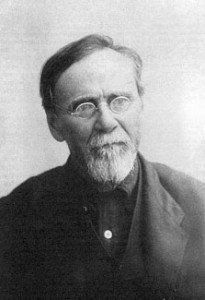
Differential Diagnosis of Back Pain
Back strain: This terminology implies that muscles in the back were either too weak for the demands placed on them or that the muscles were over used. The soreness associated with a back strain will typically clear over time. Chronic over use or repeated strains secondary to using back muscles in spite of their being injured can lead to scarring or other injuries that will be slow to heal. The primary clinical finding will be local muscle tenderness with or without some increased muscle tone to splint or protect the injure tissue. Massage may help keep scar tissue from forming or at least help the tissues remodel themselves appropriately.
Back sprain: A sprain is different than a strain in that instead of overloaded muscles there has been overloading of ligaments. Ligaments are connective tissue structures that connect bones together to stabilize the skeleton. A sprain involves partial or complete tearing of a ligament. Most of the time with avoidance of repeated injurious force a ligament will heal over a period of up to 12 weeks. Repeated trauma can lead to tearing of the healing tissue and scarring that cannot be easily remodeled. Ligament injuries, especially if the ligament is completely torn, can lead to instability of a joint complex so that joint surfaces are no longer able to work together effectively. If this happens in the back seldom is there a surgical repair available unless vertebrae start slipping away from each other. (See spondylolisthesis below) The usual rehabilitation approach is core strengthening, muscle balancing, and postural cuing. Treatments such as Kinesiotaping may increase the body’s awareness of positioning and posture. Ligament injuries can be part of larger injury complexes.
Mechanical Back Pain: This is a catch all term for some providers but it can be a precise diagnosis when a practitioner has the right examination skills. Mechanical back pain means that joints are not mechanically behaving the way that they should be. There is an optimum physiologic position for the bones on either side of a joint complex. This position can be altered by forces of trauma, postural habits, summation of forces involved in lifting, by scarring, ligamentous instability, sleeping in an awkward position, etc. When the joint is out of balance there will be abnormal pressures on joint surfaces, abnormal stresses on joint capsules, the potential for disturbance of joint nutrition any of which can activate pain (nociceptive) nerves. Pain then sets up patterns of muscle spasm or muscle inhibition that can be self sustaining.
In many instances the pain will clear as the body learns to adapt and ignore the altered nerve input to the central nervous system. Most people’s bodies accumulate silent mechanical restrictions, but at some point their ability to adapt to the sum of their restrictions is overwhelmed and they become symptomatic. To reduce symptoms usually requires not just treating the most recent joint dysfunction, but also a fair portion of the body burden of accumulated restrictions. Mechanical back pain often occurs with back sprains or strains and can be a reason for slowed or lack of recovery. Mechanical problems also impair efficiency of movement and can impact job or athletic performance. Mechanical back pain occasionally will self correct but frequently benefits from mobilization (osteopathy) or manipulation (chiropractic). Some physical therapists will have a degree of mobilization skills as well.
The overlapping facet joints of the spine, the sacroiliac joints, the joints between the ribs and vertebrae can all be sources of mechanical back pain.
Discogenic back pain: The intervertebral disc is a ligamentous ring that serves as the major joint connection between levels of the spine vertebral bodies. When uninjured it has limited nerve receptors for pain but after injury, chemicals released as a result of the injury, tend to cause more pain fibers to grow. The disc is susceptible to rotational injuries and loading injuries, both acute and chronic. Its nucleus may penetrate into the layers of fibrous cartilage or herniated, tear completely through the rings of fibrocartilage. Herniation will be dealt with separately. With a tear, chemicals and proteins which have been sealed away from the body’s immune system prior to birth, can leak out and lead to an inflammatory response. Also, a torn disc will lack integrity and there will be relative instability and overstretching of nerves in the disc which can also be painful. There is limited healing potential of annular tears. Some will calm down with time others may be chronically painful while others may advance to a disc herniation. From an osteopathic perspective the initial treatment approach is to remove compression in the tissues and to make certain that adjacent spine segments, joints and soft tissues are moving well so no additional stress is placed on the injured disc. Beyond that judicious core stabilization which avoids exercises that increase internal disc pressure are added.
Disc herniation: A disc herniation occurs when the nucleus, a gel, or with aging, a putty consistency central core, is forced through the wall of the disc. These usually happen posteriorly and laterally which means that the disc is then in position to compress nerve roots which causes classic sciatic pain. The nerve root is well innervated and can express pain on the basis of mechanical or chemical irritation. Pain advances to numbness and weakness as the compression is sufficient to compromise the blood supply to the nerve root. Patterns of numbness and weakness are specific to given nerve roots. Sciatic pain without weakness can typically be managed conservatively and patients managed without surgery typically do at least as well or better than those who proceed with surgery for pain relief. Surgery is usually indicated when there is weakness. Decompressing the nerve root usually allows the nerve function to come back and the pain to clear, but there are instances in which the nerve infarcts or is partially killed off and weakness remains.
Sciatica: This is a term which commonly refers to back pain with associated pain radiating down the leg. In some circles this is the definition. In other circles there is a differentiation between sciatica which must be secondary to nerve root compression and pseudo sciatica which is back pain with leg pain that may be a result of referred pain most typically from mechanical problems of the S-I joint or a lumbo sacral facet. It is possible to experience pain in the butt and groin radiating to the knee from hip arthritis as well.
Spinal stenosis: With this diagnosis there is nerve root compression on the basis of narrowing of the openings between the bones of adjacent vertebrae or on the basis of bony arthritis that encroaches on the nerve roots centrally. The individual suffering from spinal stenosis will often be intolerant of standing upright as spine extension closes down the openings between vertebrae (foramina) leading to increased pinching of the nerve root. The spinal stenosis patient will often adopt a progressively increasing forward bent posture as flexion opens the foramina to a slight degree decompressing the nerve root. Spinal stenosis patients will have a lot of difficulty going down stairs. They may be offered surgery to remove part of the bone involved in the nerve compression. Another surgery that has been done involves the use of an X-stop device which blocks the spine from being able to go into extension at a single specific level where the stenosis is thought to be the most critical.
Failed Back Surgery Syndrome (FBSS) or Post Laminectomy Syndrome: The most common reason for FBSS is the development of scar tissue that sticks to or compresses the nerve root. ~90% of disc surgeries have good results. Scarring is part of the healing process after surgery but some individuals will generate more scar tissue than is needed and instead of tissues levels healing together the scar tissue will cross tissue layers and send out tendrils that lead to tethering of nerve tissue that needs to be free to move or that lead to frank compression of the nerve. Other reasons for FBSS include smoking as nicotine impacts bone metabolism and small blood vessels needed for healing, and misdiagnosis. Misdiagnosis may be from not recognizing all the factors causing nerve root compression or from not recognizing back pain as originating from somewhere other than a disc herniation.
Epidural fibrosis is the term used to describe the post operative scarring responsible for recurrent nerve root entrapment or fixation of the dural sac to the spine preventing its normal mobility.
Arachnoiditis: The arachnoid is the middle layer of the meninges, the layers of connective tissue that surround the spinal cord and brain. It can occur as a result of infection such as viral or bacterial meningitis. It can occur after a bleed into the cerebrospinal fluid. It can occur as a complication of an epidural injection. If the medication is supposed to go between the outer layer and the spine but instead is injected into the spinal fluid (intra thecal space) it can cause an inflammatory reaction that thickens and scars the arachnoid. Chemotherapeutic agents are sometimes intentionally injected into this space and can lead to inflammation and scarring. This is among the bad diagnoses with very limited treatment options, which are primarily limited to pain management.
Visceral back pain: This is back pain that exists from either mechanical or disease processes affecting the guts. The differential is wide. It could include back pain from an expanding aortic aneurysm. It could involve pain from acute inflammation such as with pancreatitis or a stomach ulcer eroding thought the back wall of the stomach. It can be from mechanical problems arising from internal scar tissue from endometriosis, after abdominal or pelvic surgical intervention, usually >= 6 months after surgery. It can be secondary to shifting of an organ as a result of trauma. The most common organ would be a kidney issue coming on after a fall or other event with sudden deceleration or acceleration. Back pain higher up might be from twisting of the liver within its capsule. There are other scenarios but usually it is from malpositioning of a solid organ within the abdominal cavity.
Metastatic disease: There are certain tumors/cancers that have a predilection for spreading to the spine, either into vertebrae or into the spinal canal. These cancers include: breast, prostate, lung, kidney, and thyroid cancers. They spread to the spine because it is has a richer blood supply than most other bones. There are also cancers of the blood cells and bone marrow that can show up in bone as well. The most common of these is likely multiple myeloma.
Infectious disease: Tuberculosis is capable of spreading to bone and sometimes will be the first symptom announcing the arrival of the disease. Rare infections also occur in the discs. The common reasons for this are complications after medical interventions. There is a 1-2% risk following a surgical spine procedure. There is some risk after a needle has been introduced to the disc. This might be after a spinal tap or after a dye study to evaluate the integrity of the disc. It can occur spontaneously in children under the age of 8-10. It can sometimes be viral in which case spontaneous recovery is expected. The infection can be spread through the blood stream. For this reason IV drug users are at risk. It can also occur in individuals with weakened immune systems. It may be manageable with antibiotics, but it can sometimes require surgery to remove the infected materials or abscesses that develop.
Auto immune back pain or Spondyloarthropathies: There are a few types of back pain in which inflammation spontaneously occurs. These are somewhat inheritable conditions and are associated with certain types of proteins that are on the outside of cells.
Ankylosing spondylitis: Impacts the S-I joints and the lumbar spine. It can affect the joints of the ribs and sternum and can be associated with inflammation of the eyes. It is more common in males and occurs in late adolescence or early adulthood.
Reiter’s syndrome: Reiter’s syndrome is a reactive arthritis that occurs as a result of having had an infection. The S-I joint is frequently targeted but it can affect other joints outside of the back as well such as the knee or fingers. It comes on a few weeks (1-5) after having had an infection. Typically these are bacterial infections causing diarrhea or sexually transmitted diseases such as chlamydia or gonorrhea. HIV is also a risk factor.
Psoriatic arthritis: Psoriatic arthritis usually affects the joints of the lower extremities and of the distal extremities, but it can localize to the S-I joints and back. It is associated with the skin condition of psoriasis. It causes inflammation of the sites where tendons anchor into bones and can be destructive of the joints.
The uncommon types of back pain are not the focus of osteopathic manual therapy. When back pain is from outside disease processes such as infection, cancer or system wide inflammation treatment will be primarily carried out by the mainstream medical community with antibiotics, immunosuppressive, anti inflammatory medications to address diseases, pain medications of various classes, radiation therapy or surgery.


